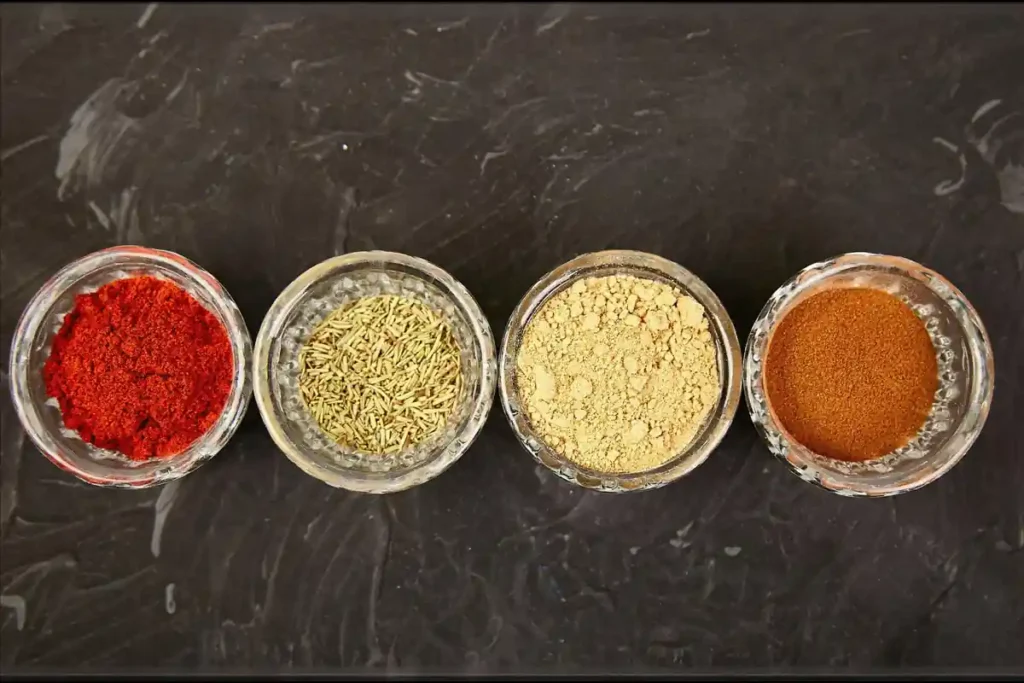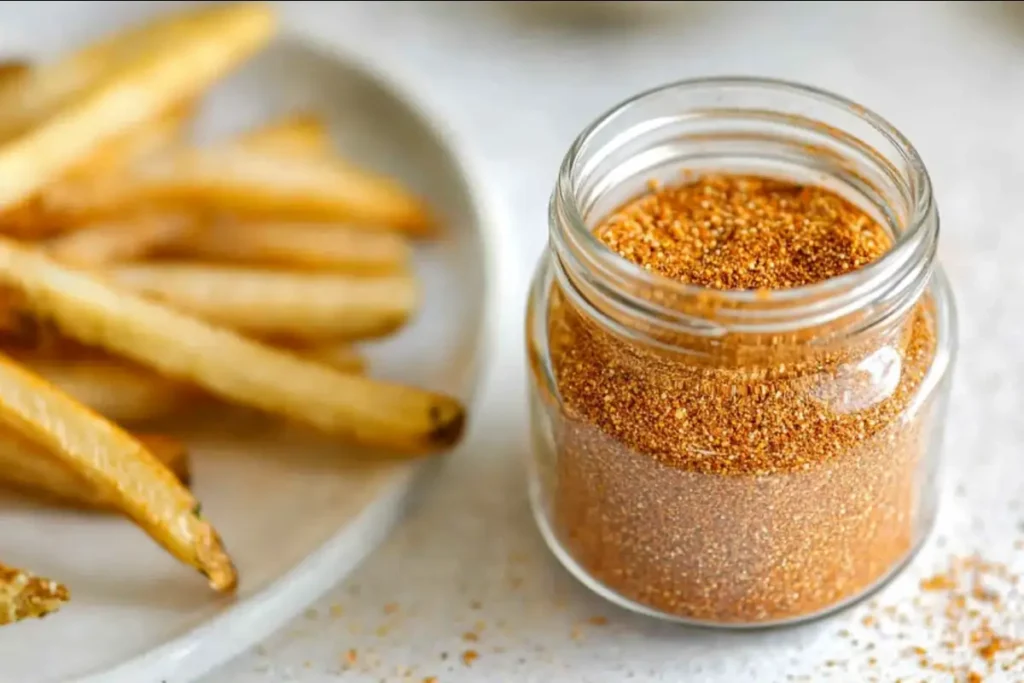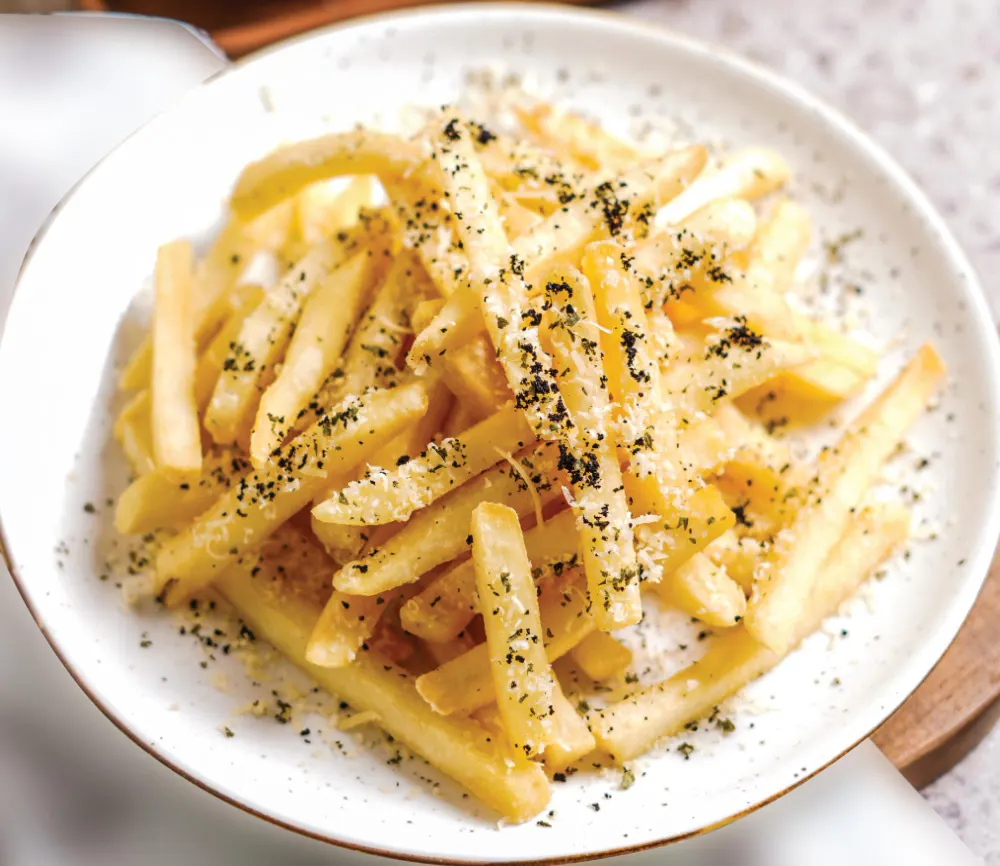Discover how to create delicious french fry seasoning for crispy, tasty fries. Explore key spices, methods, and tips for perfect homemade results.
Introduction
French fries are one of America’s most popular sides, but they become extra special when paired with the perfect french fry seasoning. Indeed, seasoning can take plain fries from ordinary to unforgettable, enhancing the natural potato taste with an irresistible burst of flavor. Throughout this guide, we will explore the roots of french fry seasoning, discuss its flavor science, and uncover how to create your own seasonings at home. In addition, we will delve into health-conscious modifications, pairing suggestions, and frequently asked questions that reveal secrets to both restaurant-style fries and fun, homemade twists.
Because french fries pair well with a wide array of meals, it is helpful to master several seasoning strategies. Although salt has long been a staple, modern cooks frequently combine herbs, spices, and unique ingredients to design remarkable blends. Therefore, it is valuable to understand the range of tastes available, from classic all-purpose mixes to bold Cajun or smoky chipotle blends. By the end of this detailed guide, you will be well-prepared to customize french fry seasoning for any occasion, whether it be a casual family dinner or a lively party with friends.
- Introduction
- A Brief History of French Fry Seasoning
- The Flavor Science of French Fry Seasoning
- Key Ingredients in French Fry Seasoning
- Popular French Fry Seasoning Profiles
- Homemade vs. Store-Bought French Fry Seasoning
- Step-by-Step Guide to Making Your Own French Fry Seasoning
- Detailed Recipe: DIY All-Purpose French Fry Seasoning
- Healthier Options and Substitutions
- Pairing Seasoned Fries with Dips & Meals
- Frequently Asked Questions (FAQ)
- Conclusion
A Brief History of French Fry Seasoning
Origin of French Fries
Although potatoes were first domesticated in South America, french fries have strong ties to European culinary history. Some believe they originated in Belgium, whereas others credit France for popularizing them. Eventually, American soldiers stationed in Europe during World War I discovered these delectable “French-fried” potatoes. When they returned home, they helped spark widespread appreciation for this savory snack.
As french fries became increasingly popular in the United States, home cooks and street vendors alike searched for ways to enhance the flavor of these crispy potatoes. Initially, a sprinkle of salt was enough. However, many soon discovered that a little creativity with herbs and spices could provide more satisfying results.
Early Seasoning Traditions
Before the rise of fast-food chains, homemade french fries typically featured simple additions such as parsley, pepper, or onion powder. Yet, the expansion of restaurant menus introduced new choices, including paprika-based blends, Cajun spices, and even sweet-and-spicy flavors. Over time, the mass production of seasonings fueled demand for packaged versions, allowing busy cooks to replicate restaurant-style fries at home.
Modern Developments
Today, french fry seasoning is more varied than ever, reflecting the diversity of global taste buds. Gourmet salts, chili powders, dried herbs, and powdered cheese blends are all fair game. In fact, social media platforms encourage home cooks to experiment with new flavors, thus fueling an ongoing wave of innovative fry seasoning recipes. Because the possibilities are endless, many people now enjoy customizing their own seasoning blends to suit personal preferences.
If you are looking for additional guidance on fresh ingredients that could pair well with homemade fries, check out Common Vegetables in Mediterranean Cuisine for information on how to integrate more vegetables into your meals. This can help create balanced plates when fries serve as a side dish.
The Flavor Science of French Fry Seasoning
Taste Profiles and Mouthfeel
Potatoes naturally contain a mellow, starchy flavor that pairs well with salty and savory elements. Therefore, the primary role of seasoning is to amplify and complement this mild foundation. Salt is a key ingredient because it unlocks the taste receptors, making fries taste more vibrant. Meanwhile, spices like garlic powder, onion powder, or paprika add depth and complexity. The mouthfeel of crispy fries also enhances the overall experience, as crunchy textures emphasize the seasoning that coats each surface.
Aroma and Flavor Synergy
Aromas can drastically influence flavor perception. For example, the scent of herbs such as rosemary or thyme can make fries smell more fragrant. Furthermore, pungent spices like cayenne or chili powder release intriguing aromas that make your taste buds tingle. Because smell and taste are closely linked, choosing aromatic ingredients in your french fry seasoning can significantly elevate your fries.
Balancing Seasonings
When mixing your own fry seasoning, balance is critical. Consequently, too much salt can mask other flavors, while insufficient salt can leave fries tasting flat. Similarly, strong spices like chipotle powder or curry powder must be used sparingly so that they do not overpower the potatoes. By striving for harmony among salty, spicy, sweet, and herbaceous notes, your seasoning will stand out in the best possible way.
Key Ingredients in French Fry Seasoning

Salts and Salt Alternatives
Salt is the mainstay of any french fry seasoning. Kosher salt and sea salt are popular because they offer improved texture and a cleaner taste compared to table salt. That said, individuals watching their sodium intake may choose low-sodium options or salt-free seasonings, which often incorporate potassium chloride or dried herbs for added taste. Using flavorful salt alternatives can ensure you still get a bold flavor without overwhelming your fries.
Essential Spices and Herbs
Several core spices are frequently featured in french fry seasoning blends:
- Paprika: Provides a subtle sweetness and a warm color.
- Garlic Powder: Introduces a savory note that complements fries nicely.
- Onion Powder: Adds a mild, sweet tang to your fries.
- Black Pepper: Offers a sharp, earthy spice that elevates other flavors.
Additionally, herbs such as thyme, oregano, or rosemary can add fresh, aromatic properties. Since potatoes typically have a neutral flavor, these herbs stand out without clashing.
Umami-Boosting Elements
Some prefer to add an umami kick to their seasoning. Ingredients like dried mushroom powder, nutritional yeast, or parmesan cheese powder can provide a deeper, more savory taste. This layer of flavor is especially appealing when aiming to replicate restaurant-quality fries at home.
Sweet & Tangy Accents
A hint of sweetness or tang can balance the salt and spice in your french fry seasoning. For instance, a small pinch of sugar or brown sugar can highlight the natural starchiness of potatoes, while citrus zest or a dash of vinegar powder can contribute a bright, tangy finish.
Popular French Fry Seasoning Profiles
H3: Classic All-Purpose Fry Seasoning
The classic blend exemplifies simplicity. Common components include:
- Salt
- Black pepper
- Garlic powder
- Onion powder
- Paprika
This straightforward mix elevates fries without overpowering them, thereby allowing the potato’s essence to shine through. In addition, this blend can be used on other foods like roasted vegetables or grilled proteins.
Spicy Cajun-Style Seasoning for Fries
Cajun cuisine provides a bold blend of flavor and heat:
- Cayenne pepper
- Paprika
- Garlic powder
- Onion powder
- Oregano
- Thyme
Because Cajun seasoning often relies on pungent spices, you may want to control the heat by reducing or increasing the cayenne. This style pairs well with Southern-inspired meals such as crispy chicken or fish.
Zesty Taco-Style Fry Seasoning
For a Tex-Mex take on fries, combine:
- Chili powder
- Cumin
- Paprika
- Garlic powder
- Onion powder
- Oregano
This seasoning goes perfectly with tacos or burritos, ensuring an all-around festive meal. If you would like more ideas on spicing up side dishes, you might explore Jalapeno Chicken Recipe for a complementary main course that also features peppers and zest.
Herbed Garlic Parmesan Blend
Italian-inspired flavors reign in this savory mix:
- Dried basil
- Dried parsley
- Garlic powder
- Parmesan cheese powder
This combination can result in cheesy fries with an herb-forward taste. If you prefer a fresher flavor, you can garnish your fries with chopped fresh basil and parsley after they come out of the oven.
Smoky Chipotle Fry Seasoning
Smoky seasonings lend a distinctive aroma:
- Chipotle powder
- Smoked paprika
- Salt
- Optional brown sugar
Because chipotle powder has a potent, smoky heat, balancing it with a touch of sweetness can help achieve a more even flavor. This profile is especially popular for barbecue-style meals or when you want to emulate a grilled taste.
Homemade vs. Store-Bought French Fry Seasoning

Advantages of Homemade Blends
Crafting your own french fry seasoning allows you to control every ingredient. Therefore, you can manage sodium content, avoid preservatives, and experiment with creative ingredients. Additionally, homemade blends can be cost-effective, particularly if you already have a variety of herbs and spices in your kitchen.
When Store-Bought Is Convenient
Despite the benefits of homemade blends, pre-packaged seasonings can still be useful. They are ideal for those seeking a quick fix or who want a specific flavor profile without measuring multiple spices. Many brands offer all-purpose blends, Cajun seasonings, and more specialized options.
Hybrid Approach
Another approach involves starting with a commercial seasoning and then enhancing it with extra spices or herbs to make it your own. This method provides a quick base while still allowing for personal flair. It is an efficient way to avoid guesswork while reaping the rewards of customization.
Step-by-Step Guide to Making Your Own French Fry Seasoning
Equipment and Ingredients
- Measuring Spoons: Precise measurements help maintain balanced flavors.
- Small Mixing Bowl: Use a bowl that allows thorough blending.
- Airtight Containers: Store seasonings in a cool, dark place to preserve freshness.
- Fresh Spices and Herbs: Quality matters. Ensure your spices are not expired.
Measuring and Mixing Spices
- Choose a Base: Often, you will start with salt and a favorite pepper (black or cayenne).
- Add Layers: Gradually mix in garlic powder, onion powder, paprika, dried herbs, or other flavoring agents.
- Blend Thoroughly: Whisk or stir your spices until they are evenly distributed.
- Optional Toasting: Some spices, like cumin or coriander, release enhanced aroma when gently toasted.
Taste-Testing and Adjustments
It is wise to sample small batches of seasoned fries before making a large quantity. For instance, sprinkle your blend on a single serving of baked or air-fried potatoes. Then, adjust salt, spice, or sweetness to taste, which ensures your final mix is exactly how you want it.
Storage Best Practices
Store your homemade seasoning in an airtight container or sealed jar. Keep it in a cupboard away from direct sunlight. Most homemade blends maintain optimal flavor for up to six months, although some may last longer. Rotate your stock regularly to keep spices as fresh as possible.
Detailed Recipe: DIY All-Purpose French Fry Seasoning

If you crave a reliable, all-in-one french fry seasoning that suits most taste buds, try the following recipe. It works well on both baked and fried potatoes, adding a delicious pop to your favorite side dish.
Ingredients
- 2 tablespoons kosher salt
- 1 tablespoon paprika
- 1 tablespoon garlic powder
- 1 tablespoon onion powder
- 1 teaspoon black pepper (adjust to your preference)
- Optional pinch of sugar (for slight sweetness)
(Yields about 1/2 cup of seasoning, enough for multiple servings.)
Step-by-Step Instructions
- Measure Out Spices
- Use measuring spoons for accuracy.
- Place each spice into a small mixing bowl.
- Combine Thoroughly
- Whisk or stir until the blend looks uniform.
- Break up any clumps to ensure even distribution.
- Taste Test
- Sprinkle a small pinch on a cooked fry.
- Adjust salt or pepper as necessary.
- Store Properly
- Transfer the seasoning into an airtight container.
- Label and date for convenience.
Nutritional Information (Per 100g of Seasoning)
| Nutrient | Amount |
|---|---|
| Calories | ~150 kcal |
| Protein | ~6 g |
| Carbohydrates | ~28 g |
| Fat | ~2 g |
| Fiber | ~14 g |
| Sodium | ~6,000 mg |
(Values are approximate and may vary based on the specific brand of spices.)
Healthier Options and Substitutions
Low-Sodium Seasonings
Individuals who need to limit sodium intake can still enjoy flavorful fries. Herbs like rosemary, thyme, and basil provide aroma, while spices like paprika or chili powder add zest without excess salt. Moreover, using potassium chloride instead of sodium chloride can help reduce overall sodium content, though the taste may differ slightly.
Salt-Free Flavors
For those striving to eliminate salt entirely, relying on other taste elements is crucial. For example, you can incorporate citrus zest—like lemon or lime—to add brightness. Also, experiment with black pepper, onion powder, and chili flakes for a dash of heat. Therefore, you can still achieve enjoyable fries without relying on salt.
Allergy-Friendly Adjustments
Some seasoning blends contain dairy-based ingredients, such as parmesan cheese powder. If you are lactose intolerant or vegan, swap out such items for nutritional yeast. Additionally, ensure any store-bought spice mixes you use are labeled gluten-free if you are sensitive to gluten.
If you want more tips on flavorful vegetable dishes, consider checking Best Vegetables for Roasting to discover how you might season roasted potatoes or other veggies for a full, balanced plate.
Pairing Seasoned Fries with Dips & Meals
Classic Dips
Traditional dips such as ketchup, mayonnaise, or ranch continue to be fan favorites. Many people also enjoy a simple garlic aioli, which involves blending mayonnaise, garlic, and lemon juice. This complements the french fry seasoning by providing a creamy counterbalance.
Fusion-Style Sauces
For adventurous palates, consider mixing sriracha into mayonnaise or stirring chipotle peppers into sour cream. Consequently, the smoky or spicy undertones elevate your seasoned fries to a whole new level. Adding a drizzle of honey to a spicy sauce can produce a sweet-heat combo that appeals to those who adore contrasting flavors.
Serving Suggestions
Seasoned fries pair exceptionally well with burgers, sandwiches, or grilled vegetables. For instance, if you plan to serve fries alongside succulent seafood, you could visit Tiger Shrimp Recipe for a delightful entrée idea. Combining well-seasoned fries with fresh shrimp fosters a crowd-pleasing surf-and-turf experience that will satisfy family and guests alike.
Frequently Asked Questions (FAQ)
What should you season fries with?
Many cooks rely on a basic mix of salt, pepper, garlic powder, onion powder, and paprika for a satisfying flavor. However, you can also explore herbs like rosemary or spices like cayenne if you want a bolder taste. Ultimately, choose seasonings that complement your meal and personal preferences.
Is French fry seasoning the same as seasoning salt?
French fry seasoning often overlaps with seasoning salt, but they are not necessarily identical. Seasoning salt is typically a pre-mixed combination of salt, pepper, onion powder, garlic powder, and sometimes paprika. Meanwhile, french fry seasoning can be more specialized, featuring unique elements like chili powder, parmesan, or herbs to suit specific flavor profiles.
Which powder is used for French fries?
Although there is no single powder designated for french fries, popular choices include garlic powder, onion powder, paprika, and chili powder. These spices provide a flavorful base that you can customize further by adding herbs or cheese powders. Many restaurants also incorporate specialized blends that include dried herbs or unique seasonings.
What is the secret to restaurant French fries?
Restaurant-quality fries often rely on multiple factors. First, chefs might blanch the potatoes in oil at a lower temperature before frying again at a higher temperature, resulting in a crispy exterior and fluffy interior. Second, they may use specialized seasoning blends designed to maximize flavor. Third, they typically ensure the fries are seasoned while still hot and freshly drained of oil to help the spices adhere well.
Conclusion
French fry seasoning transforms ordinary spuds into a mouthwatering side dish that complements a variety of meals. Whether you prefer a classic salt-and-pepper approach, a spicy Cajun kick, or a zesty taco-inspired twist, experimenting with different flavor profiles can revitalize your fries. Therefore, it helps to understand the flavor science behind well-balanced blends, as well as how to store and apply your seasoning for best results.
Moreover, personalizing your seasoning allows you to tailor sodium levels, explore new spice combinations, and accommodate dietary restrictions. Ultimately, french fry seasoning is all about discovery and creativity. With this guide, you have all the tools you need to craft everything from a basic blend to an elaborate gourmet mix. So, gather your ingredients, whip up a tasty fry seasoning, and enjoy the satisfying crunch and flavor of restaurant-style fries in the comfort of your own home.

